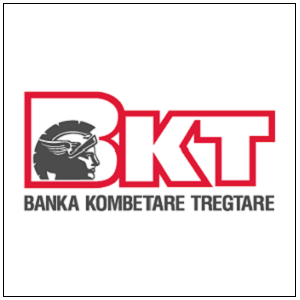Business
The Hidden Chaos Behind Resale Prices—And How It Affects You

- Price variability occurs while demand fluctuates, with companies sticking to their policies. Given this foreignness, purchasers or sellers looking for something specific in the pricing criteria may get left behind.
- Standard pricing, so that everyone can be on the same page and of the right scaling, would be an invaluable tool in reducing mismatching, something not of diverse value, and for bringing more reasonable pricing to the fore.
The previously stagnant market has recently exploded with sellers offering a tuft of resale goods every few days, such as second-hand luxury items, pre-used electronic appliances, and refurbished furniture. On one hand, the rise in demand has made resale prices reach all unconscionable stalemates, leading to confusion and frustration not only among buyers but on both ends. The fluctuating state of the market leads to a loss of both sides’ members’ trust on the one hand and eyes of suspicion on the supposed pricing irregularities, transparency, and consumer trust of resale prices on the other hand.
The Wild Fluctuations in Resale Prices
The largest challenge faced in the secondary market lies in uncontained pricing. Maybe symbolic of what the Bazaar is when compared with traditional retail—where every new design is priced based on costs of production, imposing and promoting a particular brand, and any competitor’s price—but to get the line drawn in disambiguation would be like trying to prove our industry is an operating system somewhat different, or extra-legal. This means that prices could differ considerably because of the platform one is using, geographical area, market demand, and, then, sometimes, the seller’s sense of value.
So, for example, one designer bag, though in essentially similar condition, may be found listed at £500 on one resale platform and £800 on another. On the other hand, electronic items such as smartphones and laptops skyrocket in price depending on when the new model of a product is launched. This creates such an unpredictable environment that a buyer might find it very difficult to know if he has been fairly dealing with it.
Supply and Demand Role
The pivotal role of demand and supply, alongside resale-pricing dynamics, seems too often to be distorted in its effect by an array of shattered circumstances. Fluctuating interest, stemming out of social media waves, celebrity endorsements, or some other random moments of availability, can act as the skyrocketing juncture. The right words for falling into compliance and restfulness come in the knowledge of identical goods flooding the market, with prices severely plummeting.
Turn your attention to phrases like limited-edition trainers. For these kinds of trainers, a pair that was merely retailed at £150 could have got its price to an initial asking of £1,000 with the explicit promotion of the hype, then bombed down to £300 once still more resellers had moved on the market. This is a vast-arm-building situation, where buyers will eventually pay too much when sellers will lose huge hoped-for profits.
Lack of Regulation and Standardisation
Unsimilar to the retail industry, where a manufacturer and a consumer set prices as allowed by the law, in the resale market, things are done without any regulatory control, which means that no universal typical price has ever been determined for different-second-hand goods, hence some platform says how to arrive at a worth by considering historical data, but even this is not verifiable with consistency.
Furthermore, various fees exist for different resale platforms that can drastically distort prices. A seller can set higher prices that pay the commissions where they are considerably high; meanwhile, others can sell cheaper in attempts to beat other market players. This working environment affects a multitude of other factors related to pricing, making it difficult for consumers to compare different options.
Impacting Both Buyers and Sellers
With buyers, uneven resale price fluctuations can be something to dread. Some hesitant buyers stay out of transactions, anticipating that they may find themselves overpaying or that prices may drop very soon after the transaction is completed. This lack of confidence is likely to hurt the trust of buyers in the resale market and thus act as a check to repeated transactions.
Many sellers, in comparison, suffer from the inability to strike a balance between competitive price setting and profit-making. Without a clear industry-wide norm and reference point, they run the risk of either pricing too high and reducing the completion of slow sales or pricing too low and just missing out. For this reason, this is a problem that could adversely affect many small businesses and individuals who run their businesses in a resale mode.
How to Fix the Problem?
Given the need to stabilise both the resale market and customer confidence, some possibilities will have to be discussed:
- Tools for Pricing Transparency: Resale platforms can seriously think of setting up advanced software for intelligently correcting price extraction and running predictions to alert both the anticipated purchaser and seller of what an updated price value might look like.
- Industry-wide Guidelines: Creating shared pricing norms for resale merchandise, particularly scarce luxuries and electronics, will give the industry a consistent feel.
- Condition Grade Verification: A standardised grade structure to legitimise the secondhand status of items (e.g., ‘Like New,’ ‘Gently Used,’ ‘Fair Condition’) could be an easy middleman in getting listing prices down or up depending on the exact product condition.
- Communication Platform for Resale Platforms: Concretisation of cooperation between major resale-orientated platforms would pretty much set off standardised pricing that will even out the most unusual variation of prices.
At the end of the Day:
One of the most potent features of the modern exchange sector is that it renders sustainability and affordability readiness. The industry, however, has been hindered by an erratic pricing structure that overburdens buyers while shortchanging sellers. Trust in this industry can only grow on the back of more transparency and standardisation. Overcoming these difficulties will guarantee that resale serves as a feasible and faithful alternative to main-market retailing.
As consumers become more inclined to buy products that have been reshuffled, the creation of a fair and consistent pricing system will ever be part and parcel of the industry’s enduring success.


















































